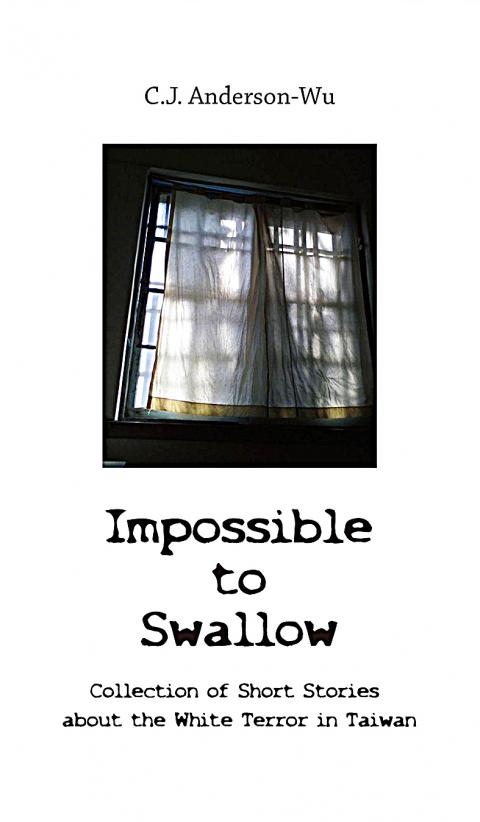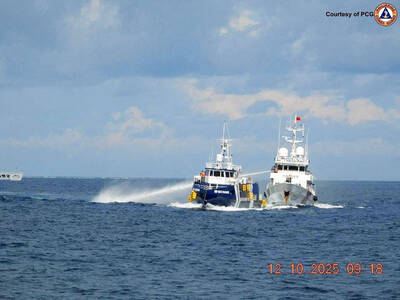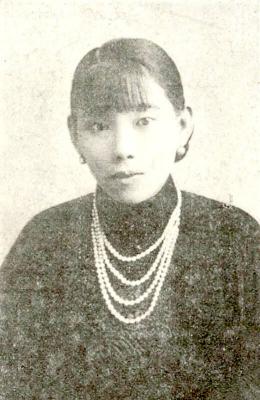CJ Anderson-Wu (吳介禎) is busily engaged in Taiwan’s literary scene, much of the time translating works from English into Chinese. Impossible to Swallow, however, is a collection of her own short stories, advertised as being about the impact of Taiwan’s White Terror on the lives of ordinary people.
The first story, “Judge Not,” is about a group of lawyers working on the political prosecution of a magazine. None of them expresses a particularly strong view, and clearly the prosecution is destined to succeed in precisely the way it was intended to. The journal turns out to be Formosa Magazine, which lay at the center of the famous Formosa Incident, or Kaohsiung Incident, of 1979.
“Blue Eyes” is mostly a dialogue between a mother and her daughter about the daughter’s father, formerly an American serviceman in Taiwan but now out of the picture. The capitulation, as many Taiwanese saw it, of then-US president Jimmy Carter to China in 1979 was the occasion for the departure of US troops from the island.

“First Lady” comes next, and is about the wife of a long-serving Taiwan president on the occasion of his death. Here politics is for the first time in full focus, with contenders for the vacant post easy manipulated by the former first lady.
“Wednesdays” presents the wife of a man who has inexplicably disappeared. On every Wednesday for 17 years she travels to the local detention center in an attempt to discover what has become of him. Eventually one of his former colleagues is released, and says that the man is probably dead. He and several others were detained because they were involved in raising money for a publication in the US advocating Taiwanese democracy.
Next comes “Those Healed and Unhealed,” in which a 90-year-old doctor deals with patients he’s known for half a lifetime, revealing in the process histories of arrest and incarceration on Green Island. It was a time when Chiang Kai-shek’s (蔣介石) policy, one character reminisces, was it was better to punish 99 innocent people than let one guilty one escape.
The title story, “Impossible to Swallow,” follows. It’s set in relatively modern times and concerns an American man working in Taiwan and engaged to be married to a Taiwanese woman. During one conversation between the two the woman recalls the days of censorship, when the Taiwanese language was under deep suspicion. Censorship operates together with fear, distrust and hatred, she says, until your life gradually erodes and becomes “impossible to swallow.”
The two work for an airline company in which a strike is planned over working hours. A more humane schedule is eventually introduced, but as a result the company loses much of its value to investors. That’s capitalism, the American thinks.
“Legacy” is unusual in this volume in having a main character who is gay. He’s involved in street protests under the leadership of his professor, who is eventually arrested and tortured to death. The professor’s mother is a convinced radical and supports the protesters by cooking and selling Korean food under the name “Democratic Kimchi.”
“Others’ Guilt” happens to include an aboriginal character but this isn’t at the heart of the story. It’s about a young boy who acts as a courier, taking food to a man who has fled his home to live in the woods after being accused of being a communist. The people who prepare the food also make a false certificate of identification for the fugitive.
Twenty years later the young boy, now adult and living in Taipei, is accused of murder, while the former fugitive is a senior figure in the prosecutor’s office. It’s possible he could save the accused’s life but he doesn’t, and the man, who was once responsible for saving him, is executed.
The last story, “A Letter from Father,” is extremely short. It simply consists of a letter from an imprisoned father to his daughter. He compares her and her mother to the trees he can see out of his dormitory window, and hopes they will flourish and his daughter grow up straight and strong.
The date is given as March 28, 1982, and an appended note states that it was “inspired by a letter of Tsai Yi-Cheng, who had been incarcerated for 24 years, because of his involvement with underground political activities.”
These stories certainly demonstrate the range of those who suffered under Taiwan’s White Terror, the harsh targeting of perceived political dissidents usually dated as lasting from 1947 to 1987. They also show how different people were affected in different ways, some directly by imprisonment and not infrequently death, others by being their relatives, others involved towards the end of the period in protests that led to less traumatic results.
What characterizes these tales is the absence of scenes of violence. There is none of the brutal assault, including murder and torture, that the White Terror regime was responsible for. Instead, we see the effects of such horrors on other people, with the implication that the atmosphere of repression was pervasive and left few Taiwanese citizens untouched.
Assuming that this was the author’s intention, then the perspective is finely managed, and the comprehensive point well made. And the inclusion of minorities — an Aborigine, a gay and a foreigner — certainly emphasizes the book’s range.
I enjoyed these stories. They may not be great masterpieces, but they have variety and an underlying seriousness of purpose, both features of the best fiction.
Serenity International is a publisher of Taiwanese and other literature, with offices in Taipei and a business registration in Nipomo, California.

Many people noticed the flood of pro-China propaganda across a number of venues in recent weeks that looks like a coordinated assault on US Taiwan policy. It does look like an effort intended to influence the US before the meeting between US President Donald Trump and Chinese dictator Xi Jinping (習近平) over the weekend. Jennifer Kavanagh’s piece in the New York Times in September appears to be the opening strike of the current campaign. She followed up last week in the Lowy Interpreter, blaming the US for causing the PRC to escalate in the Philippines and Taiwan, saying that as

Nov. 3 to Nov. 9 In 1925, 18-year-old Huang Chin-chuan (黃金川) penned the following words: “When will the day of women’s equal rights arrive, so that my talents won’t drift away in the eastern stream?” These were the closing lines to her poem “Female Student” (女學生), which expressed her unwillingness to be confined to traditional female roles and her desire to study and explore the world. Born to a wealthy family on Nov. 5, 1907, Huang was able to study in Japan — a rare privilege for women in her time — and even made a name for herself in the

Would you eat lab-grown chocolate? I requested a sample from California Cultured, a Sacramento-based company. Its chocolate, not yet commercially available, is made with techniques that have previously been used to synthesize other bioactive products like certain plant-derived pharmaceuticals for commercial sale. A few days later, it arrives. The morsel, barely bigger than a coffee bean, is supposed to be the flavor equivalent of a 70 percent to 80 percent dark chocolate. I tear open its sealed packet and a chocolatey aroma escapes — so far, so good. I pop it in my mouth. Slightly waxy and distinctly bitter, it boasts those bright,

“Taiwanese increasingly reluctant to give their lives to defend the island,” trumpeted a South China Morning Post (SCMP) headline last week. The survey asked whether people should be prepared to pay any price — including death — to protect Taiwan and prevent “reunification.” “The poll found that 52.2 percent of those questioned were unwilling to do so — an 8.4-point rise compared with a similar survey carried out two years ago — while 40.8 percent were willing, down four points on the previous survey,” the article said. Treated as anti-Taiwan propaganda, the piece was sent around by the usual pro-China suspects